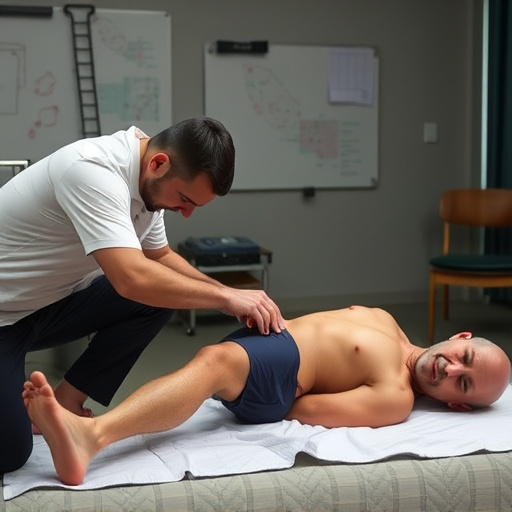Occupational injury treatment requires personalized plans integrating medical history, physical capabilities, job demands, and recovery goals. Comprehensive assessments lead to tailored strategies combining non-invasive methods, physical therapy, targeted medication, and innovative treatments like shockwave therapy for optimal healing and safe return to work. Regular follow-ups ensure adjustments based on progress.
Personalized occupational injury treatment plans are transforming the way we address work-related injuries. By understanding that each individual has unique needs and limitations, healthcare professionals can create tailored strategies that accelerate recovery and enhance return to work. This article explores individualized occupational injury care, from comprehensive assessment to evidence-based action, highlighting effective strategies for optimal recovery results.
- Understanding Individualized Occupational Injury Care
- Tailoring Treatment: From Assessment to Action
- Effective Strategies for Optimal Recovery Results
Understanding Individualized Occupational Injury Care

Occupational injuries often require specialized care tailored to the unique needs and circumstances of each individual. Understanding individualized occupational injury care involves recognizing that every worker has distinct physical capabilities, job requirements, and recovery goals. Healthcare professionals craft personalized treatment plans that encompass a multifaceted approach, addressing not just the immediate pain or injury but also the long-term functional abilities needed for return to work.
This individualized care extends beyond traditional medical treatments like physical therapy and medication. It incorporates strategies for back pain relief, sciatica treatment, and overall wellness care, ensuring workers receive comprehensive support throughout their recovery journey. By focusing on the whole person—mind, body, and spirit—these plans foster not only healing but also a sustainable return to productive employment.
Tailoring Treatment: From Assessment to Action

When it comes to occupational injury treatment, one size doesn’t fit all. A successful plan requires a deep understanding of the individual’s unique situation, which begins with a thorough assessment. This process involves not just identifying the physical injuries but also factoring in the person’s occupation, daily activities, and pain tolerance. By gathering this information, healthcare professionals can tailor a treatment regimen that addresses specific needs.
For instance, someone involved in a car accident (auto accident recovery) might require different care than an office worker experiencing whiplash. Non-invasive treatments like physical therapy, chiropractic adjustments, or targeted medication can be highly effective for various occupational injuries, including whiplash. The key lies in customizing the approach, ensuring that the treatment plan not only alleviates symptoms but also prepares the individual to return to their job safely and efficiently.
Effective Strategies for Optimal Recovery Results

Personalized occupational injury treatment plans are designed to cater to each individual’s unique needs and circumstances, ensuring optimal recovery results. The first step in developing an effective plan is a comprehensive assessment that includes detailed medical history, physical examination, and diagnostic imaging. This process helps healthcare professionals identify the root cause of the injury, enabling them to create targeted interventions.
One of the key strategies for successful occupational injury treatment involves integrating diverse therapeutic approaches. For instance, combining rest, ice, compression, and elevation (RICE) with exercises focusing on strength and flexibility can significantly enhance recovery. Additionally, innovative treatments like shockwave therapy for pain can be highly effective in managing conditions such as tendinopathy and chronic sciatica treatment. Regular follow-up sessions are crucial to monitor progress, adjust the treatment plan as needed, and ensure that patients receive the best possible care throughout their journey towards full recovery.
Personalized occupational injury treatment plans are the cornerstone of effective recovery. By understanding individual needs and tailoring strategies from assessment to action, we can achieve optimal results. Implementing these evidence-based practices ensures a comprehensive approach to managing occupational injuries, fostering a faster and more successful return to work for employees.














